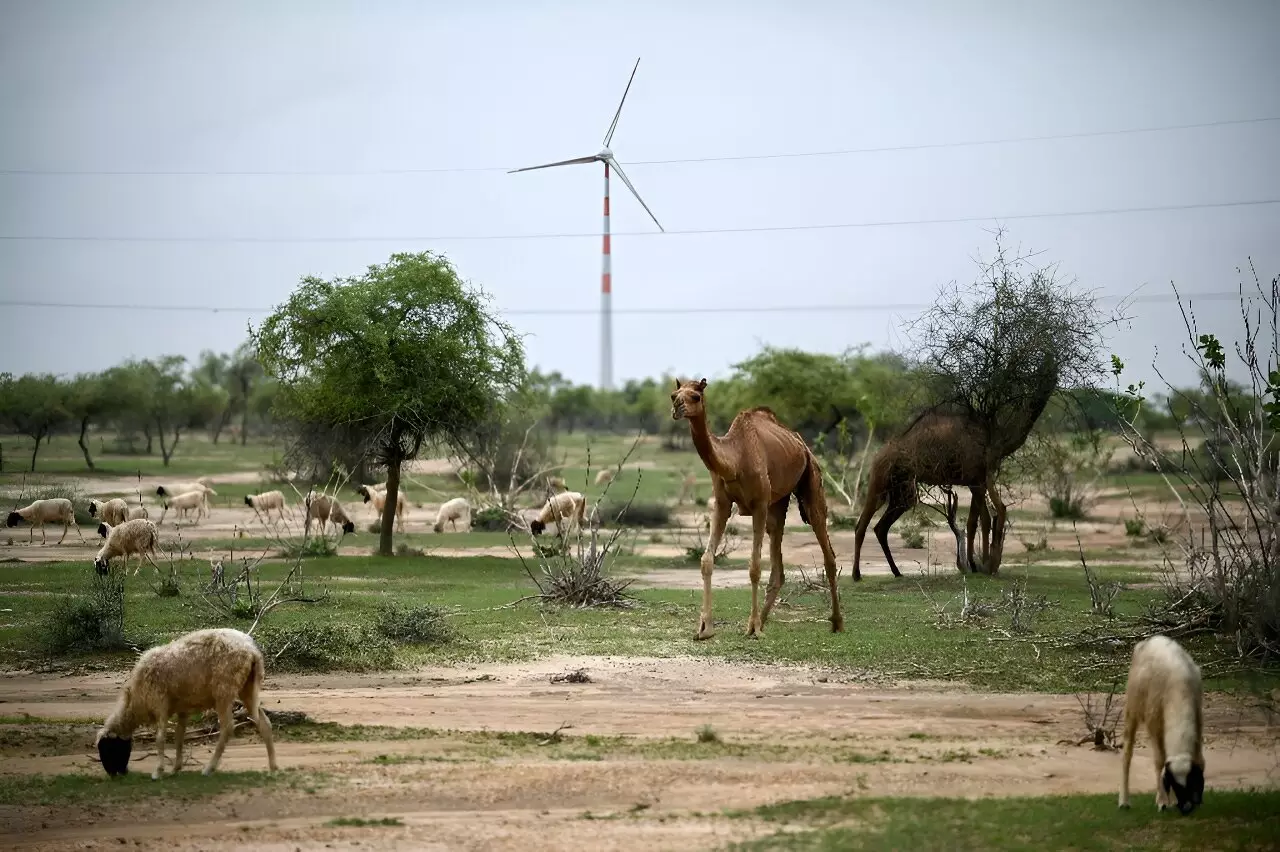As India strives to position itself as a leader in renewable energy, wind farms are sprouting across landscapes once defined by their natural beauty and biodiversity. In the Thar Desert, specifically in India’s Rajasthan state, towering wind turbines promise a significant increase in the nation’s non-fossil fuel power capacity. Despite these ambitious goals, the impact on local communities reveals a troubling reality. Residents living near these industrial installations are now grappling with the repercussions of this so-called progress. Many feel that their subsistence—rooted in traditional farming and herding practices—is being sacrificed for a vision that seems distant from their daily lives.
The voices of these affected communities are essential to understand the full scope of India’s renewable energy ambitions. For instance, Nena Ram, a seasoned livestock herder, articulates the frustrations of many when he declares that the windmills “are useless to us.” His statement encapsulates a widespread sentiment that, while large corporations profit from green energy, it is the local populace that bears the consequences of these developments. Grazing lands are reduced, sacred spaces for community rituals are desecrated, and livestock health directly declines due to diminished resources.
The agricultural lifestyle of many in western Rajasthan, characterized by herding camels, cattle, and goats, has been dramatically disrupted by the wind energy boom. The establishment of wind farms has not only encroached upon grazing lands but has also wreaked havoc on local ecosystems. Community-managed oases, known as “orans,” are integral to sustaining livestock but are increasingly threatened by construction activity and heavy machinery. As Ram laments, the community’s long-standing relationship with the land is being destroyed—simultaneously exacerbating the struggles associated with climate change and the country’s attempts at mitigation.
Moreover, power outages add to the residents’ frustrations. Although the wind farms generate significant energy, local communities often do not benefit from this power. Entire regions face prolonged blackouts lasting several days, a stark contrast to the surging energy requirements of urban centers and industrial hubs. Local residents, especially those in districts like Jaisalmer, speak of their “desperate” search for light, with only a few hours of power each day, which does little to mitigate the oppressive summer heat that can escalate to impossible levels.
The broader narrative surrounding renewable energy often overlooks these critical human dimensions: the displacement of local populations and the deterioration of their livelihoods. With Indian conglomerates like Adani Group and Suzlon at the helm of wind energy development, the promise of sustainable development and fair compensation rings hollow for many locals. Although these companies assert their commitment to community welfare—by investing in education and healthcare—the reality differs markedly. Farmers like Jitendra Kumar emphasize that milk production has plummeted and that land traditionally used for grazing is now occupied by towering turbines.
The statistics surrounding India’s renewable energy goals—aiming for 500 GW by 2030—may seem impressive on paper. Nevertheless, they fail to resonate with the villagers affected by these ambitious projects, many of whom perceive the turbines as an unwelcome invasion. This disconnect is further compounded by an urgent environmental context. While local ecosystems hold significant biodiversity, they are often disregarded in favor of industrial progress. The plight of the Great Indian Bustard, for example, highlights the stark reality that, as development intensifies, so too does the risk of extinction for species once abundant in the region.
As India continues its push towards greener energy sources, it becomes increasingly clear that the path chosen carries weighty implications not only for the environment but also for the livelihoods of local residents. The goals of clean energy must not obscure the genuine needs of communities; developments intended to benefit society should not come at the expense of those who already inhabit these lands. It is imperative for policymakers and corporations to engage meaningfully with local voices, acknowledging their expertise and addressing their concerns as they navigate this transformation.
In this era of climate uncertainty, achieving environmental sustainability requires a balanced approach. The future of renewable energy in India should harmonize with the needs and rights of local communities, ensuring that prosperity is equitable and universally shared. Only then can the nation’s ambitious vision truly stand the test of time without leaving its most vulnerable populations behind.

